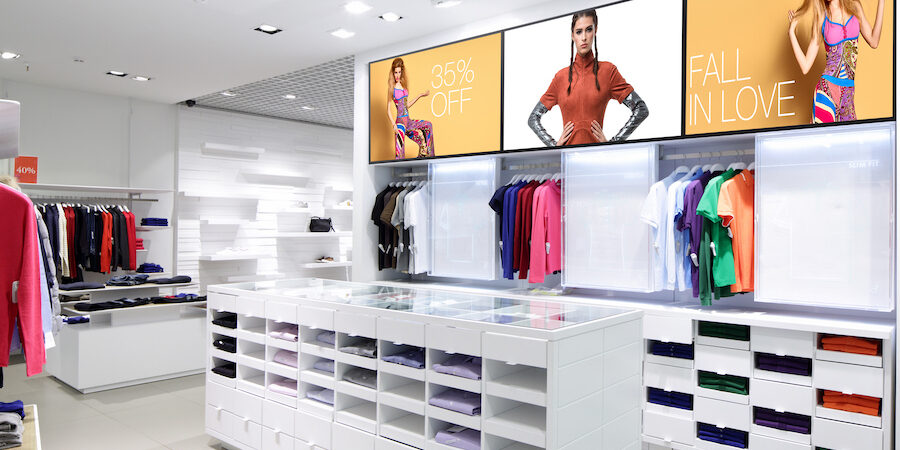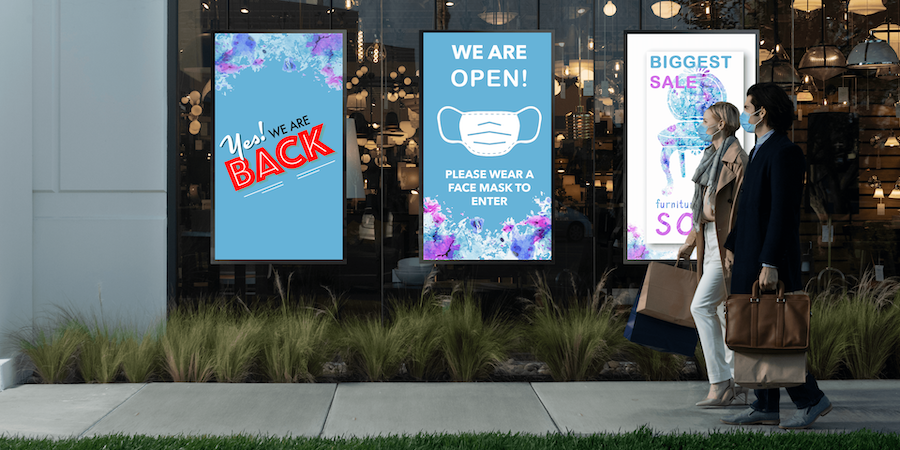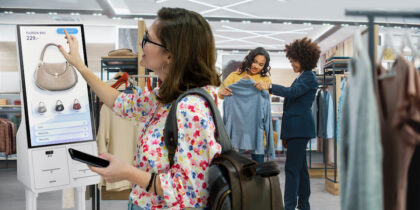Traditionally, the shopper’s journey looks like a funnel: Consumers narrow down their choices and often know what they want before they get to a physical store. But with smartphones, high-speed mobile data and in-store digital messaging, shoppers can be both more informed and more impulsive about their buying decisions.
Global consulting firm McKinsey says in-store digital messaging has a major impact at the “moment of truth” for buyers.
“Consumers want to look at a product in action and are highly influenced by the visual dimension,” says a McKinsey report from summer 2020. “Up to 40 percent of them change their minds because of something they see, learn, or do at this point — say, packaging, placement or interactions with salespeople.”
With COVID-19 compelling many more consumers to order online and use home delivery, the digital signage industry’s longtime motto is more relevant than ever: the right message, in the right place, at the right time.
The new buyer’s journey
Internet access and mobile devices provide consumers with a bottomless well of information — from product demos and reviews to price comparisons and real-time inventory reports. While most consumers are already well informed about their options before they head to the store, research suggests that they hold off on their final decision until they get there. Visual and emotional factors like at-shelf messaging and packaging remain important influences.
Improve store safety with digital signage
Discover new ways you can adapt your store signage to keep shoppers safe and maximize ROI. Download Now
In the words of McKinsey’s researchers: “Sometimes it takes a combination of approaches — great packaging, a favorable shelf position, forceful fixtures, informative signage — to attract consumers who enter a store with a strong attachment to their initial-consideration set. Our research shows that in-store touch points provide a significant opportunity for other brands.”
As you select your store’s digital displays, be mindful of where you position them, and be sure to use accessible management software.
From the outside in: Curbs and concourses
Durable, weatherproof and shatter-resistant LED outdoor displays attract customers by sharing limited-time offers and promotions. These screens are also being used curbside at open-air malls and other retail hubs to facilitate the buy online, pickup at curb (BOPAC) and buy online, pickup in store (BOPIS) services that gained popularity in 2020.
In store entryways and facades, direct view LED displays serve as headers that drive messaging and easily grab the attention of passersby. Along with these evergreen uses, digital messaging can also reinforce in-store health and safety protocols.
From the inside out: Signposts and self-service
To use in-store digital displays most effectively, you’ll need to consider factors like scale, complexity, purpose and brand positioning.
In a large-footprint store where shoppers come through the door on a mission — like getting the week’s groceries or other household supplies — the store’s layout and signage can help people get what they need, locating different product sections and highlighting promotions.
In 2020, Walmart started rolling out new store designs inspired by the big, bold and simple signage now popular in major airports, according to Walmart’s chief customer officer. Shoppers who are on a mission want to get in and out, so their ideal shopping experience is one that’s clear and convenient. Recent research suggests 43 percent of consumers want to shop more efficiently and welcome in-store advertising that guides their browsing, while 69 percent of people just want get their shopping done as quickly as they can.
Strategically placed at decision points, large flat-panel displays guide shoppers on where to go and what to do — with reminders about store policies like social distancing and mask requirements. These displays can also highlight product promotions, loyalty programs and new services like BOPAC or BOPIS.
Interactive displays can offer shoppers convenient tools like product lookups, demos and inventory checks — right on the sales floor. More retailers are also using interactive displays for self-service ordering and checkout. Touchscreen displays and fully contactless options such as kiosks allow for fewer one-on-one interactions between shoppers and staff, promoting convenience and protecting everyone’s health.
To set the tone of their shopping experience, some retail designers are installing direct-view LED display walls behind sales counters — or even filling entire walls in major stores. Luxury brands are using premium options like Samsung’s microLED-based The Wall for Business to deliver crisp visuals that evoke their stores’ branding. Meanwhile, smaller displays can nest with products on merchandising shelves and tables, or sit above them as digital headers that highlight products and offer more information.
Retailers are also using displays in the back of the house — areas not accessible to shoppers. Large displays connected to the real-time data from store management systems help staff stay organized with everything from curbside pickup operations and product deliveries to communicating store policy changes and recruiting. Retailers can use these behind-the-scenes displays to significantly improve overall team communication while streamlining sales teams’ connectivity.
Keeping up with the times
By nature and by necessity, business operations will continue to evolve. Digital displays allow businesses to keep pace with consumers — and ensure they’ll have the right information in front of them. When it comes to the modern shopping experience, effective digital signage can make all the difference.
Make sure you’re equipped to configure and tailor your screens’ real-time messaging using an integrated CMS, as explained in this free complete guide. And for a wide array of signage options, discover Samsung’s lineup of innovate retail displays, built with modern business in mind.








